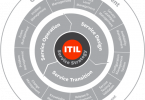What is Intelligent Swarming?
Intelligent swarming is the idea that one support person will work on a trouble ticket from start to finish, without escalations. This means that the support person will seek the proper resource, working towards a resolution instead of escalating it to a higher level. This is potentially aggravating to customers who have become used to speedy resolutions. By not escalating, the person working towards the resolution “swarms” with other peers around a problem until that issue is resolved.
To a certain extent, some level of swarming has been done in the past. In some instances, though, the escalation process can create a hierarchy or caste system where the upper-tier teams tend to look down on their counterparts. This upper tier, in some unfortunate cases, tends to hoard knowledge, refusing to talk to customers directly. In this situation, the customer may feel like they are going into a support black hole with no chance of regaining their lost productivity. On the other hand, lower-tier teams may be measured on metrics that are only attainable by escalating calls. With a little more effort or time, they could have resolved the issue for the customer. By doing this, customer satisfaction tends to be negatively skewed.
Intelligent swarming seeks to change that narrative. Over time, as teams build knowledge bases to help them resolve common or known issues, issues are resolved faster. In some cases, these knowledge bases are not only shared with lower-tier teams but also made readily available for the customer. By doing this, the customer is frequently able to resolve known issues on their own. Decreasing customer downtime increases customer productivity and satisfaction with the company, product or service that is offered.
Intelligent swarming serves as a new tool, focusing on resolution times as well as team knowledge. Sharing knowledge makes each person more efficient and better able to resolve undocumented problems.
Defining the Status Quo
Currently, a double-edged customer service sword exists, often increasing customers’ irritation when they call in to support and are not provided with immediate answers. The customer does not realize that this problem is new, requiring more research to understand. Intelligent swarming allows a company to maintain customer satisfaction time and again.
Earlier, we discussed how the tiered structure created a caste system. As you move up the tiers, you become less engaged with the customer. In some ways, it appears as if upper-tier teams are rewarded for not having to talk with customers. This is the current ideology drives many teams. A wall is created between each tier, as the issue is escalated. In many cases, customers have to work to overcome these walls just as much as the lower-tier team members.
Additionally, tribal knowledge can get stuck in one person’s head by the sheer existence of these walls. If that person leaves your organization and takes that tribal knowledge with them, it decreases the productivity of your teams overall. On the flip side, you don’t provide an opportunity for lower-tier team members to grow. By allowing them to gain more knowledge by working the issues to completion, these team members would receive the experience necessary to speed up the process of resolving issues faster in the future while growing professionally.
Why is it Useful?
Switching to intelligent swarming allows us to realign goals to make our teams more productive. Instead of the dreaded escalations that make customers cringe, one team member now solely focuses on getting the customer back to the point of productivity. In the beginning, this technician will start as a generalist, working to define the problem. Once the problem has been properly defined, that person then accesses the right resources to resolve the issue or documents the details of the issue as part of the investigation until they are able to work toward a solution with the customer.
In the past, the initial call taker would answer the call and pass the buck. Now that agent owns it from start to finish. This has the benefit of letting the customer know that they are a priority. The person who started the case will help them see it to the end, not getting lost in the shuffle. Additionally, by resolving issues in this way, the agent gains experience while becoming a specialist.
This flattening of the teams also removes the caste system that has become prevalent in many support centers. It disperses tribal knowledge amongst the team, making it easier and faster to support customers in the future as well as bring new employees on board.
When implementing an intelligent swarming, organizations should carefully plan an execute their strategy. Creating a roadmap to help you navigate towards your goal is a great place to start. This will help you make sure you have the proper components in place. Developing knowledge bases, creating customer portals, and getting the team mentally prepared for the changes all take time, and if done too quickly, may result in an extremely bumpy transition.
Should all support centers move to intelligent swarming? Each organization should individually evaluate the benefits of doing so. Only through proper analysis can you determine if intelligent swarming will work for you.
Intelligent swarming fosters a collaborative solution-oriented environment instead of one built on the thinking “not it”. Thinking of your knowledge base as a collaboration with the end-user to help them find their answers enables you to begin to plan a strategy for the transition.
Once you have a customer, accessible knowledge base, calls that do reach your help desk teams will be more complicated than they were in the past. To get these resolved quickly, you will need to be well on your way to creating an intelligent swarm and deconstructing the hierarchy of the old tiered system, helping you remain competitive while providing top tier customer support.
Also, the abilities of your team increase. The distribution of tribal knowledge, along with the improved experience dealing with complex issues, makes the team stronger overall. Further, breaking down the walls can lead to higher satisfaction amongst the team members as well.







